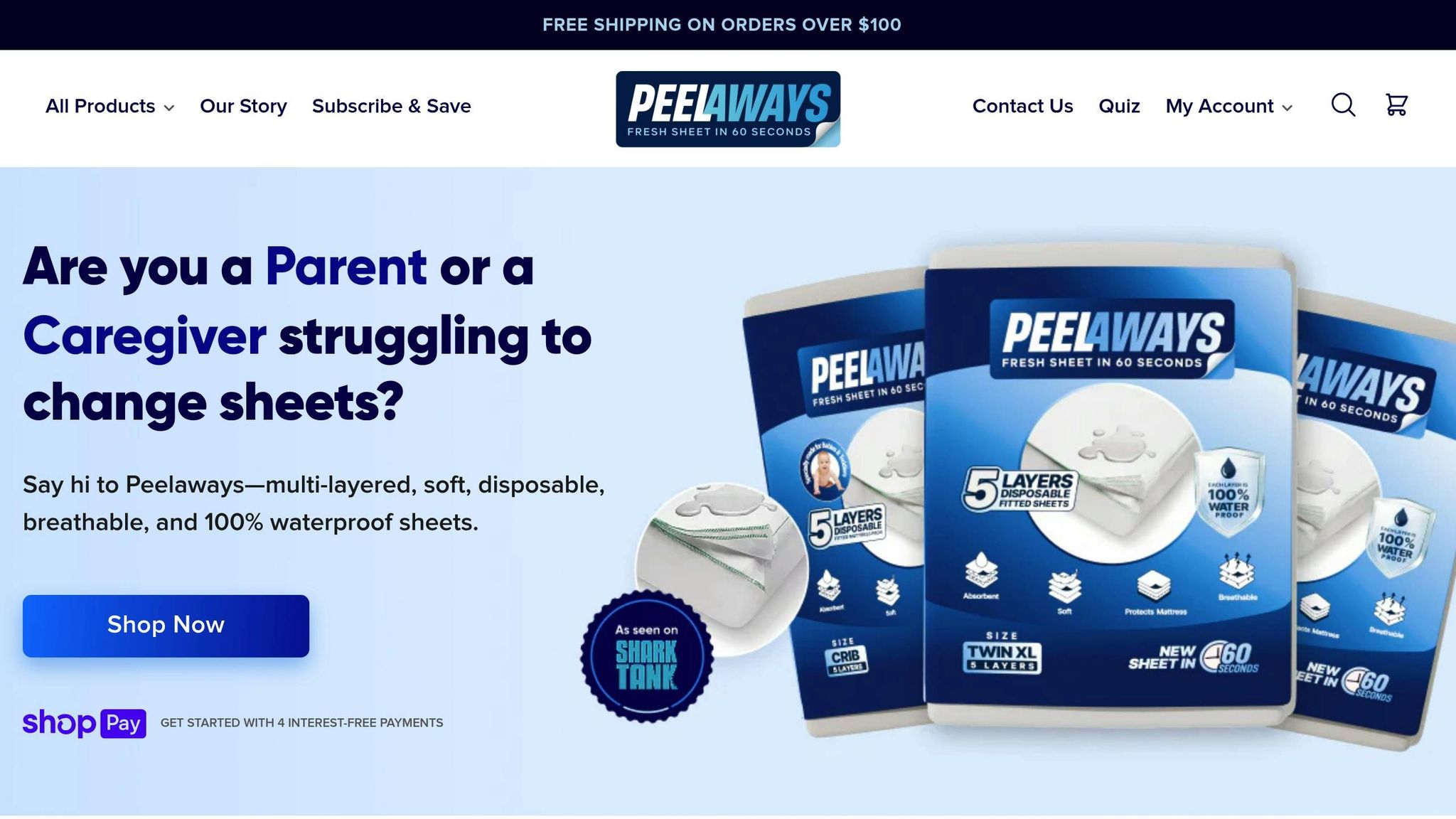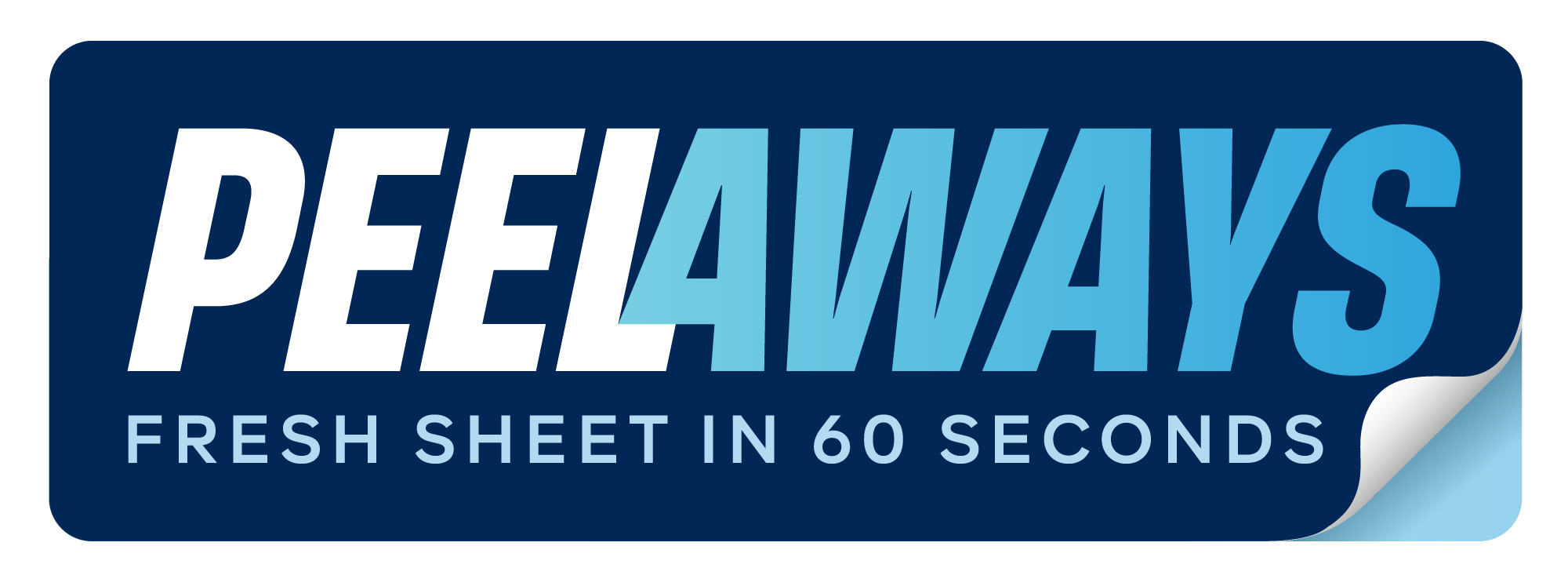How to Handle Nighttime Potty Training Regression

Nighttime potty training regression is when a child who has stayed dry for at least six months suddenly starts wetting the bed again. It’s common, especially in kids under seven, and often linked to stress, routine changes, or physical development. Here’s how you can help:
- Stick to a bedtime routine: Include a bathroom trip right before bed.
- Limit fluids before sleep: Reduce drinks 1–2 hours before bedtime.
- Make nighttime bathroom access easy: Use nightlights and keep the path clear.
- Stay calm during accidents: Avoid frustration and reassure your child.
- Consider medical advice if needed: Persistent issues or symptoms like pain or fever may need a doctor’s input.
For quick cleanups, products like PeelAways disposable waterproof bed sheets simplify the process, saving time and effort. Most regressions resolve with patience, consistency, and support.
How To Manage Nighttime Potty Training Regression? - Childhood Education Zone

Why Nighttime Potty Training Regression Happens
Figuring out why regression happens is the first step toward solving it. Nighttime potty training regression often stems from emotional stress, physical health issues, or disruptions in routines. Secondary bedwetting - when a child starts wetting the bed again after staying dry for at least six months - is a common occurrence with clear causes[2]. Once you identify the root of the problem, you can take steps to help your child regain control. These causes lay the groundwork for practical solutions discussed later.
Stress and Life Changes
Big changes in a child’s life can bring on emotional stress, which makes it harder for them to recognize or respond to their body’s needs while asleep. Even happy changes - like welcoming a sibling, starting preschool, moving to a new home, or adjusting to a different caregiver - can feel overwhelming and lead to nighttime accidents. Stress often shows up as clinginess, mood swings, or trouble sleeping[4].
Medical and Physical Issues
In some cases, a return to nighttime accidents signals an underlying medical issue. If accidents suddenly become frequent after a long dry spell, a physical condition might be the cause rather than emotional stress. Problems like urinary tract infections, constipation, diabetes, or delayed bladder development can all play a role. Warning signs to watch for include pain during urination, blood in the urine, fever, excessive thirst, or abdominal pain. If you notice these symptoms, it’s time to check in with your pediatrician[4].
Some children also need more time for their bodies to mature. As they grow, their production of the anti-diuretic hormone (ADH) increases, which helps reduce nighttime urine production. Kids who haven’t yet reached this stage may continue to have accidents until their bodies catch up[1].
Changes in Daily Routines
A consistent routine is crucial for maintaining nighttime dryness. Disruptions - like travel, holidays, or irregular bedtimes - can throw off a child’s internal rhythm, making accidents more likely[5]. Even small changes, such as staying up late or skipping a pre-bedtime bathroom trip, can lead to setbacks. If daytime bathroom habits become inconsistent, it can spill over into the night. Additionally, the brain-bladder connection that helps a child wake up to use the restroom might need time to re-establish after routine disruptions[1].
How to Manage Nighttime Accidents
Helping your child through nighttime accidents is about finding the right balance between prevention and emotional support. By creating a structured routine and responding calmly when accidents happen, you can reduce their frequency while boosting your child's confidence.
Set Up a Regular Bedtime Routine
A predictable bedtime routine helps your child transition to sleep and can significantly lower the chances of nighttime accidents[1][5]. The key is consistency and calmness.
Always include a bathroom trip as the last step before bed. This ensures their bladder is as empty as possible before they fall asleep[5]. Afterward, engage in quiet activities like reading a book or listening to soft music to help them relax. These calming moments signal that it's time for rest.
Stick to the same routine every night. Even small changes can disrupt the pattern their body is learning to follow. If you're traveling or dealing with unusual schedules, try to maintain the core elements, like the pre-bedtime bathroom visit and a soothing activity.
Reduce Drinks Before Bedtime
Cutting back on fluids 1–2 hours before bedtime can help prevent accidents[1][5]. This doesn’t mean your child should go thirsty - just encourage them to drink more earlier in the day and gradually taper off as bedtime nears.
Be mindful of what they drink in the evening. Water and milk are fine in small amounts, but sugary or caffeinated drinks can increase urine production and should be avoided entirely[5]. If your child feels thirsty close to bedtime, offer just a few sips of water instead of a full glass.
This approach allows their body to process fluids well before they fall asleep, aligning with their natural rhythms.
Set Up Easy Nighttime Bathroom Access
Make it as simple as possible for your child to reach the bathroom during the night. Keep a potty chair in their room or just outside the door for quick access[1]. This eliminates the challenge of navigating hallways or stairs when they’re half-asleep.
If they use the main bathroom, ensure the path is well-lit with nightlights and free of obstacles[1]. Easy-to-remove pajamas and a nearby step stool can also make the process more manageable. These small adjustments encourage independence and help your child feel more confident about getting up to use the bathroom.
By making the bathroom routine effortless, you're reinforcing the connection between feeling the urge and taking action. This setup also minimizes stress for everyone if an accident does happen.
Stay Calm When Accidents Happen
How you react to accidents plays a big role in your child’s confidence. Stay calm and avoid showing frustration when these moments occur[3][4]. Your child is likely already upset, and negative reactions can make them feel ashamed or stressed.
Use reassuring words to normalize the situation. For instance, you could say:
"It’s okay, accidents happen to everyone. You’re learning, and I’m proud of you for trying."[3][4]
This kind of response reduces feelings of shame and motivates them to keep trying. It’s worth remembering that up to 20% of 5-year-olds experience regular nighttime wetting[7], so your child is not alone in this.
Focus on quick cleanups instead of turning the accident into a big event. Waterproof mattress protectors or disposable sheets like PeelAways can make middle-of-the-night changes much easier, allowing everyone to get back to sleep with minimal disruption.
sbb-itb-45288fe
Bedding Solutions for Nighttime Accidents
Dealing with nighttime accidents can be a hassle, especially during those early-morning wake-ups. But with the right bedding setup, you can make those moments much easier to handle. A smart choice of bedding not only protects your child's mattress but also cuts down on laundry and helps everyone get back to sleep faster. PeelAways offer a practical alternative to traditional solutions, delivering convenience and peace of mind.
Using PeelAways Disposable Waterproof Bed Sheets

PeelAways are a game-changer when it comes to managing nighttime accidents. These sheets feature a patented multi-layer design, with 5 to 7 absorbent layers depending on the size. When an accident happens, you simply peel off the top layer to reveal a fresh, clean sheet underneath - no mattress lifting, no immediate laundry, and no mess. The whole process takes less than a minute.
Each layer is completely waterproof, so liquids won’t seep through to the mattress or the next sheet. And unlike some waterproof bedding, PeelAways are breathable and quiet, thanks to their advanced membrane. This design keeps the bed cool and dry without the crinkling noise you might expect. Plus, they’re free from vinyl, PVC, phthalates, and fire retardants, making them safe for kids with sensitive skin.
These features ensure that clean bedding is always ready, making nighttime routines smoother and less stressful.
How PeelAways Help Families and Caregivers
Families who use PeelAways often find that they simplify cleanup and reduce stress during potty training or regression periods. For example, Ronda shared how her 12-year-old son gained independence:
"When he has an accident he now can take care of it himself and put a new top sheet on his bed. No more scrubbing, no more smell, and no more embarrassment." - Ronda
The convenience doesn’t stop there. Stephanie Jackson highlighted how effective the sheets are at containing messes:
"After peeling off the top layer, no liquid seeped through - complete protection without extra effort." - Stephanie Jackson
For those dealing with frequent accidents, the time and energy saved are undeniable. Jalene Stanger summed it up perfectly:
"They hold a LOT of liquid and are easy to use and tear away. No more 15 loads of laundry and wet mattresses!" - Jalene Stanger
PeelAways Features Comparison
Here’s how PeelAways stack up against more traditional bedding options:
| Feature | PeelAways | Standard Protector | Washable Mattress Pad |
|---|---|---|---|
| Cleanup Time | Under 1 minute | 10–15 minutes | 15–30 minutes |
| Mattress Lifting | Not required | Required | Required |
| Laundry Needed | None | Yes, immediately | Yes, immediately |
| Cross-contamination Risk | Zero | Moderate | High |
| Layers Available | 5–7 per pack | Single layer | Single layer |
| Child Independence | High | Low | Low |
PeelAways start at $30.99 for Crib-A-Peel, with larger sizes like King reaching $53.99. While the initial cost is higher than a single mattress protector, families save on water, detergent, and electricity by cutting down on laundry.
The variety of sizes makes it easy to find the right fit for your child’s needs. Crib-A-Peel (52" x 28") is perfect for toddlers, while Cot (75" x 30") and Twin (75" x 39") sizes work for older children. For extended protection, the Twin XL version includes 7 layers.
With over 6,000 five-star reviews and a 4.8 rating, PeelAways have earned their reputation as a top potty training product. To make things even better, the company offers a 30-day money-back guarantee, so families can try them risk-free during those challenging regression phases.
Supporting Your Child's Confidence and Progress
Once you've streamlined nightly cleanups, it’s time to focus on something just as important: your child’s emotional well-being. Nighttime potty training regression can shake their confidence, especially if they thought they had staying dry all figured out. Accidents might leave them feeling embarrassed or confused, but your calm and supportive response can make a huge difference in how they recover. Building their emotional resilience is key to helping them move forward.
Celebrate Dry Nights and Effort
Acknowledging dry nights is important - but don’t stop there. Celebrate the effort, too. When your child wakes up dry, you can say something like, "I’m so proud you stayed dry all night!" or "Great job listening to your body!" These small affirmations help reinforce their confidence.
Even when accidents happen, recognizing their effort matters just as much. For instance, you might say, "I’m proud of you for trying to use the potty last night", or "You did a great job getting up to try." This lets your child know that their attempts are valued, regardless of the outcome [3][6].
Simple reward systems, like sticker charts for dry nights or potty attempts, can also be helpful. While small incentives can be motivating, make sure verbal encouragement remains the main focus. Research indicates that up to 20% of five-year-olds still wet the bed occasionally, so patience is essential during this process [6]. By staying positive, you create an encouraging environment that helps your child feel supported, even when setbacks occur.
Stay Calm and Consistent
For most kids, regression is only temporary, and your steady, calm response plays a big role in helping them feel secure. Stick to your usual bedtime routine, including that final trip to the potty, even if progress feels slow. This consistency reassures your child and reinforces expectations without adding unnecessary pressure [1][6].
When accidents happen, keep your response neutral and comforting. Say things like, "It’s okay - accidents happen", or "Your body is still learning." Using this kind of language prevents feelings of shame and keeps your child motivated to keep trying [3][4].
Avoid punishment altogether. Children under seven are still developing the anti-diuretic hormone that helps control nighttime bladder function, so many accidents are simply out of their control [1][3]. Punishment can add stress, which may actually make regressions worse. If you’re not seeing progress with supportive strategies, it might be time to consider professional advice.
When to Contact Your Doctor
While most regressions resolve on their own, there are times when reaching out to your pediatrician is necessary. If accidents continue for several months without improvement - especially in children over seven - it’s worth seeking medical advice [4].
Pay attention to any additional symptoms that could point to an underlying medical issue. These might include pain during urination, blood in the urine, excessive thirst, or noticeable changes in your child’s mood or behavior. Conditions like urinary tract infections or constipation can sometimes contribute to nighttime accidents and may require treatment [4].
Stress can also play a role in regression. If accidents increase after major life changes - like moving, starting school, or family stress - and your child shows signs of anxiety or behavioral shifts, it might be helpful to consult a pediatrician or child counselor. Addressing the root cause of the stress can often lead to improvement [4].
In cases where accidents persist or other symptoms arise, early intervention is important. Getting professional help can make a big difference in resolving the issue and boosting your child’s confidence.
Conclusion: Managing Regression with Confidence
Nighttime potty training regression doesn’t have to throw off your family’s progress or peace of mind. With a mix of patience and practical strategies, you can guide your child through this phase while supporting their emotional growth.
To recap, the strategies we’ve discussed - like sticking to consistent bedtime routines, cutting back on evening fluids, making the bathroom easily accessible, and staying calm during accidents - work together to create a positive, encouraging environment. Keep in mind that regression is a normal part of development, especially up to age seven. Most children naturally grow out of nighttime accidents as their bodies mature and begin producing more anti-diuretic hormone.
The way you handle the practical side of accidents can make all the difference. Traditional cleanup methods can lead to exhausting nights and added stress. That’s where PeelAways disposable waterproof bed sheets come in. With their 5 to 7 peel-away layers, they make cleanup quick and easy - no need to lift the mattress or worry about cross-contamination. Just peel away a soiled layer to reveal a fresh, clean sheet underneath.
PeelAways are designed with families in mind, offering reliable performance and a range of sizes. They fit discreetly under regular bedding, giving children the chance to manage accidents more independently while keeping things simple for parents.
FAQs
What are the signs that stress or emotional changes might be causing my child’s nighttime potty training regression?
Stress or emotional shifts can sometimes trigger a setback in nighttime potty training. Signs to keep an eye on include your child becoming more clingy, experiencing disrupted sleep patterns, showing mood swings, or suddenly developing fears like being afraid of the dark or staying alone. They might also share concerns about school, changes within the family, or other events that could be shaking their confidence and daily routine.
If stress seems to be the culprit, focus on offering extra comfort and sticking to a steady bedtime routine. A soothing sleep environment and open conversations about their worries can help them feel more at ease. To make things a bit easier during this phase, using waterproof, multi-layered bedding can simplify cleanup and reduce stress for both you and your child.
How can I tell if my child's nighttime accidents are caused by a medical issue or just a normal part of potty training regression?
Nighttime accidents during potty training can often be a natural part of the process, but it's wise to rule out any medical issues. If you're uncertain, reaching out to your child's pediatrician is a good step. They can assess your child's overall health, check for conditions like urinary tract infections or sleep disorders, and offer advice specific to your child's situation.
While navigating this phase, practical solutions can make life easier. For example, waterproof, multi-layer bed sheets can simplify cleanup, giving you more time to focus on encouraging and supporting your child through this stage.
How can I support my child during nighttime potty training setbacks?
Nighttime potty training can be tough for both kids and parents, but there are easy ways to make it less stressful. One handy option is using Peelaways disposable, waterproof bed sheets. These sheets come with multiple layers, so when accidents happen, you can simply peel off the top layer to reveal a clean one - no fuss, no mess.
Peelaways are designed to be soft and absorbent, providing comfort for your little one. They’re available in toddler-friendly sizes like Crib-A-Peel and larger sizes for older kids, making them a great fit for different stages of growth. Best of all, they save you from the hassle of late-night mattress cleaning or extra laundry, helping everyone get back to sleep faster.
Related Blog Posts
- Quick Guide: Managing Overnight Accidents in Children
- Ultimate Guide To Potty Training Routines
- Ultimate Guide to Bedwetting Routines
- Ultimate Guide to Bedwetting Hygiene
Comments
0

SAVE MONEY & WATER
Professionals & Institutions save a fortune on labor/laundry.

SUPERIOR COMFORT
The first thing our customers notice is how soft our sheets are.

100% WATERPROOF
Each layer is 100% Waterproof, perfect for spills and accidents

SAVE TIME
Change the sheet in under 1 minute without stripping the bed.




Leave a comment